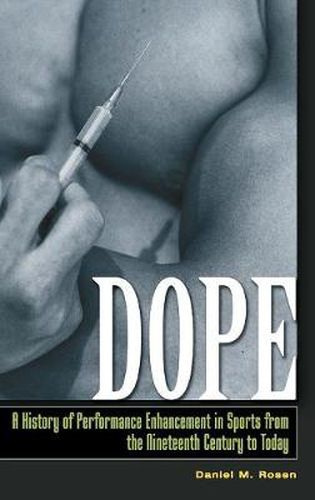Readings Newsletter
Become a Readings Member to make your shopping experience even easier.
Sign in or sign up for free!
You’re not far away from qualifying for FREE standard shipping within Australia
You’ve qualified for FREE standard shipping within Australia
The cart is loading…






Since the dawn of athletic competition during the original Olympic Games in Ancient Greece, athletes, as well as their coaches and trainers, have been finding innovative ways to gain an edge on their competition. Some of those performance-enhancement methods have been within the accepted rules while other methods skirt the gray area between being within the rules and not, while still other methods break the established rules. In modern times, doping - the use of performance-enhancing drugs - has been one method athletes and their trainers have used to beat their competition. The history of sports doping during the modern era can be traced through the events and scandals of the times in which the athletes lived. From the use of amphetamines and other stimulants in the early 20th century, to the use of testosterone and steroids by both the USSR and the United States during Cold War-era Olympics games, to blood doping and EPO, to designer drugs, the history of doping in sports closely follows the medical and technological advances of our times. In the early 21st century, the possibility of genetically engineered athletes looms. The story of doping in sports over the last century offers clues to where the battle over performance enhancement will be fought in the years to come.
This book includes a timeline of major milestones/events in the history of doping from the mid-1800s onward. It also shows that a number of popularly circulated stories about doping in sports don’t hold up under close examination. For example, in 1886, an English cyclist was said to have died following the Bordeaux to Paris Derny race. However, the Bordeaux to Paris race didn’t exist in 1886. It was first run in 1891. Second, the cyclist who supposedly died in 1886 actually died in 1896-from typhoid fever, rather than doping-related causes.
$9.00 standard shipping within Australia
FREE standard shipping within Australia for orders over $100.00
Express & International shipping calculated at checkout
Since the dawn of athletic competition during the original Olympic Games in Ancient Greece, athletes, as well as their coaches and trainers, have been finding innovative ways to gain an edge on their competition. Some of those performance-enhancement methods have been within the accepted rules while other methods skirt the gray area between being within the rules and not, while still other methods break the established rules. In modern times, doping - the use of performance-enhancing drugs - has been one method athletes and their trainers have used to beat their competition. The history of sports doping during the modern era can be traced through the events and scandals of the times in which the athletes lived. From the use of amphetamines and other stimulants in the early 20th century, to the use of testosterone and steroids by both the USSR and the United States during Cold War-era Olympics games, to blood doping and EPO, to designer drugs, the history of doping in sports closely follows the medical and technological advances of our times. In the early 21st century, the possibility of genetically engineered athletes looms. The story of doping in sports over the last century offers clues to where the battle over performance enhancement will be fought in the years to come.
This book includes a timeline of major milestones/events in the history of doping from the mid-1800s onward. It also shows that a number of popularly circulated stories about doping in sports don’t hold up under close examination. For example, in 1886, an English cyclist was said to have died following the Bordeaux to Paris Derny race. However, the Bordeaux to Paris race didn’t exist in 1886. It was first run in 1891. Second, the cyclist who supposedly died in 1886 actually died in 1896-from typhoid fever, rather than doping-related causes.